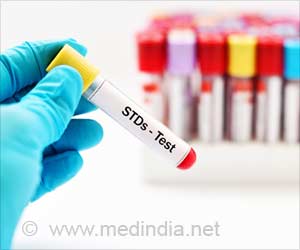Interventions aimed at reducing sexual activity is equally effective in teens indulging in risky health behaviours as it is in vigilant peers, says a new study.
Usually, it is believed that teens with risky behaviour have a higher tendency to engage in sexual activity than more cautious adolescents, but the interventions have almost the same result in both high-risk and low-risk teens.Irrespective of their level on the risk spectrum, teens seemed positively influenced by intervention messages in the 1990s and early 2000s, when there was a decline in sexual experience and number of sexual partners across the board.
"The three biggest changes in adolescent behaviors in the last 16 years have been delaying sex, increasing the use of condoms and reducing the number of partners. All three are areas that HIV education has clearly identified as goals," said lead author John Santelli, M.D.
However, Santelli said that while interventions aimed at reducing risky sexual behaviours in adolescents seemed successful for a while, the new data also show that this trend might be heading in the opposite direction.
In the study, the researchers analyzed data from the Youth Risk Behavior Survey - a nationally representative survey of U.S. high school students - collected from 1991 to 2007.
They categorized students into groups according to risky behaviors - such as smoking or alcohol use - and then looked each group's sexual activity when it came to four parameters: ever having sexual intercourse, having four or more lifetime partners, current sexual activity and the use of contraception during the last sexual experience.
Students who engaged in nonsexual high-risk behaviours were three times more likely than lower risk students to say they had had four or more lifetime sexual partners.
About 87 percent of students engaging in the highest risk behaviours had ever had sex, compared with only 13 percent of those engaging in low or no risk nonsexual behaviours.
Sylvana Bennett, M.D., of the University of California, San Diego Medical Center, also noted that the positive trend might be reversing, and that the reversal coincides with "a nationwide policy shift away from programs that included contraceptive information toward abstinence-only programs."
She said: "Troubling findings of an increasing teen birth rate in 2006 and the increasing number of sexually experienced teens after a low in 1999," just after "the federal government began limiting its funding to programs that did not mention contraception except to point out its limitations" in 2000.
"We don't know why we were successful in the 90s. It looks like we were reaching the low-risk kids and the high-risk kids, but now it looks like [birth rates] might be coming up again - and that's disturbing," said Santelli.
The study appears online in the Journal of Adolescent Health.
Source-ANI
LIN









